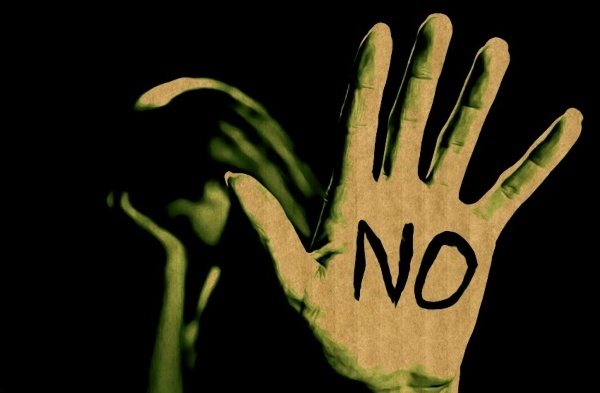For victims of domestic violence, mediation is just another beating
-68a5642af21b5.jpeg)
In Bangladesh, family life across generations has been bound by an unspoken but persistent cruelty.
When a child fails to meet the expectations of society, or the demands of a domineering father, the blame rarely falls on the father. It is the mother who bears the brunt.
She hears the insults: “Your son did this, your daughter did that.” What follows is often shouting, humiliation, sometimes blows.
This pattern has become so ingrained that domestic violence is no longer shocking. A husband beating his wife does not scandalize the neighborhood; it barely registers.
Women are abused, even killed, and yet their suffering belongs to no one–not their parents, not their in-laws, not even the state. Abuse here transcends class and education; it cuts through wealth and poverty, privilege and deprivation.
We call it common. But is it natural? Or have we allowed patriarchy to disguise brutality as normalcy?
When I was a child, I lived next door to a house where screams were as routine as the morning azan. One afternoon, I watched as a man hurled his wife to the ground and beat her so savagely that the tiny nose stud on her face sliced into her skin, drawing blood that streamed down her cheek.
I was small, but the memory is seared into me; the sight of her trying to shield herself, looking around desperately for help that never came.
For others, it was theater. Neighbors muttered, “She must have done something wrong,” or, “How dare she resist her husband’s hand.” Abuse was not only tolerated, it was rationalized.
I remember another home where a man raised a machete against his wife as she begged on the floor: “Just listen to me once.” He did not listen. His fury came from something as banal as a missing document.
That was reason enough, in his mind, to slap, kick, curse, and threaten the mother of his children. Those children–three of them, wide-eyed with fear–watched their mother cower. Even their terror did not stay his hand. Conscience did not stop him. Nor did the law.
The problem is those were not exceptions, rather those were the daily rhythm of countless Bangladeshi households. Women, bruised and silenced, aged into illnesses no one connected to decades of violence.
Their scars were invisible, their pain dismissed. “Why does this woman have so many ailments?” people would ask, as if their fragility were innate rather than inflicted.
-68a5639be35fd.png)
Frail protection shields
The cruelty often masquerades as ordinary life. Women are beaten simply for falling ill–or, more bluntly, for being women. I once saw an advertisement where a woman asked a salon to cut her hair so short that her husband could no longer grab it while beating her.
That was marketed not as tragedy, but as a kind of grim “solution.”
Violence here is not confined to the act itself; it is generational. Children who grow up watching their fathers thrash their mothers internalize it as normal. Sons, in particular, often replicate it: contempt for their mothers mutates into violence against their wives.
Not all, but enough to form a brutal pattern–where wife-beating becomes not just tolerated but considered a right, and hatred of women takes on the permanence of a cultural inheritance.
I recently saw one of these tragedies unfold. A young woman, 25 years old, the mother of four, was cooking when her husband dragged her aside and strangled her.
He staged it as a suicide and fled, leaving her unfinished meal still simmering in the kitchen. Her bedroom was messy, her day ordinary–until suddenly she was dead. She had asked her family for help.
They told her to “adjust” to her husband, to endure for the sake of her children. She adjusted. And it killed her.
Just days earlier, another woman was stripped naked, beaten, filmed, and the video circulated for public consumption. I refused to watch it. Enough images of brutality already haunt me.
And yet, instead of fortifying laws to protect women, Bangladesh has chosen regression. The Prevention of Women and Children Repression Act of 2000, Section 11(c) once allowed a woman beaten over dowry to go directly to court.
Even in cases of “simple hurt,” perpetrators faced two to five years in prison and fines. It was not perfect, but it offered at least a direct line to justice.
Now, under the Legal Aid Services (Amendment) Ordinance 2025, the state has rewritten that path. Before a woman can seek justice, she must first face her abuser in mediation–sit across from the very man who assaulted her and attempt “compromise.”
But what compromise exists with someone who has already crushed your body, broken your bones, strangled your spirit? Wasn’t the woman who died already compromising, day after day, simply by staying alive in her marriage?
Wasn’t the woman who was thrown to the floor and begged to be heard already negotiating for her survival?
It is indeed a state-sanctioned cruelty, a system that demands women endure their own destruction in the name of harmony.

The cruelty of forced mediation
Women endure years of violence for reasons that expose the cruelty of both patriarchy and poverty. Some stay to shield their children. Others remain because they have no income and no parents willing to take them back.
Many accept abuse in exchange for nothing more than food and clothing. And even women who are financially secure often choose silence, sacrificing themselves to protect their family’s reputation–or because years of brutality have convinced them there is no way out of this hell.
In the rare instance when a woman defies her family, her community, and her own fear to seek justice, the state now asks her to do the unthinkable: to “compromise” with her abuser.
Yes, there are cases where dowry laws have been misused. But to impose mediation as the default is not protection. It is collusion. It shields the abuser, not the abused.
The law should not be bent toward reconciliation with violence; it should be sharpened toward accountability. If a partner assaults another, the state’s role is clear–to punish the offender. Women are not asking for privilege. They are demanding the bare minimum any human being deserves: justice.
And what exactly does the state imagine she is mediating with?
A man who sees his wife as nothing more than a “female,” as property, as a servant? A man who rationalizes his violence with excuses–“I’m short-tempered,” “She must have done something wrong”--as though rage justifies brutality? A man who terrorizes his children by brutalizing their mother before their eyes?
Forced mediation in these circumstances is a parody of justice, a system that hands abusers immunity, cloaked in the language of reconciliation.
If the state cannot protect the woman who has risked everything to come forward, then let us call this what it is. It is not mediation. It is surrender.
—
Shrabony Rahman is a researcher and development professional specializing in Governance and International Relations.

